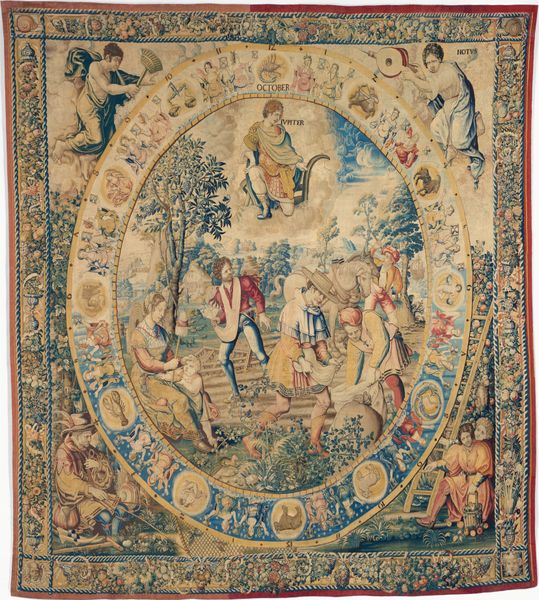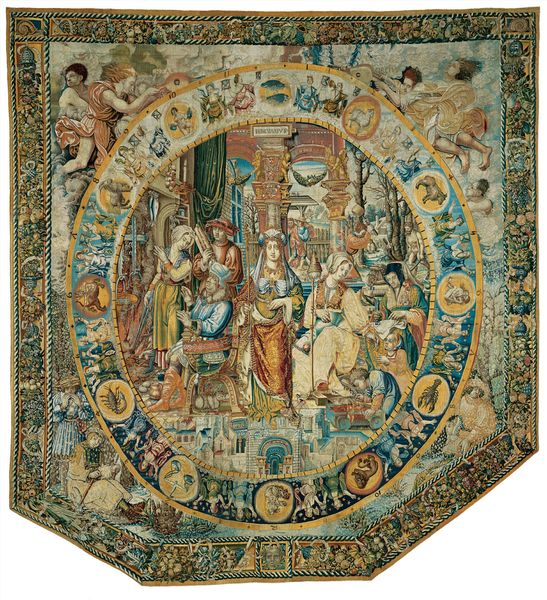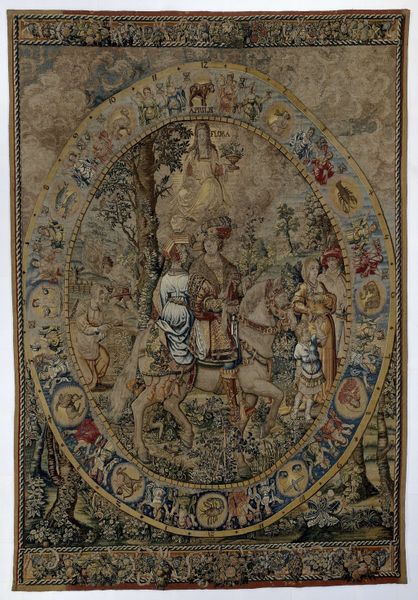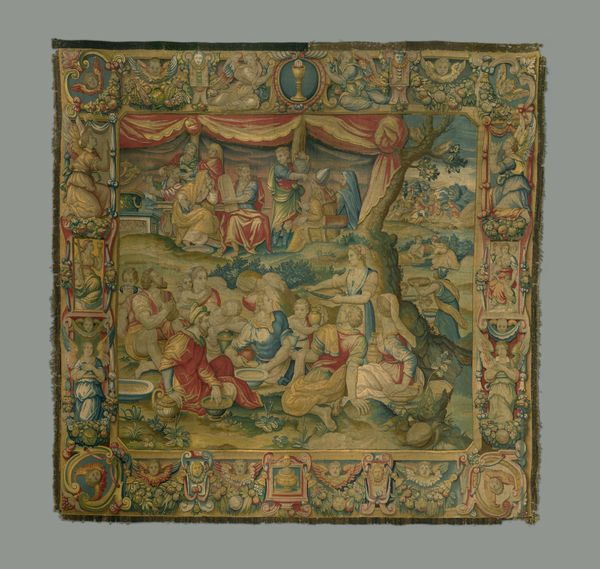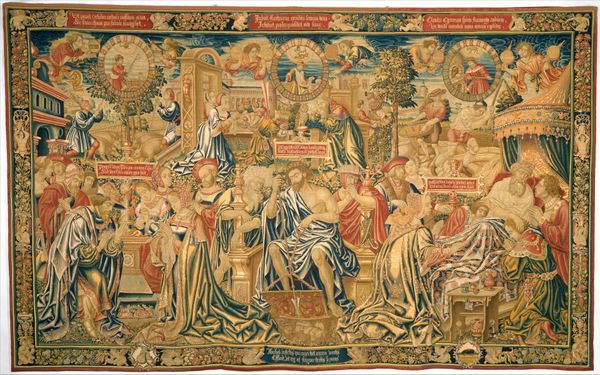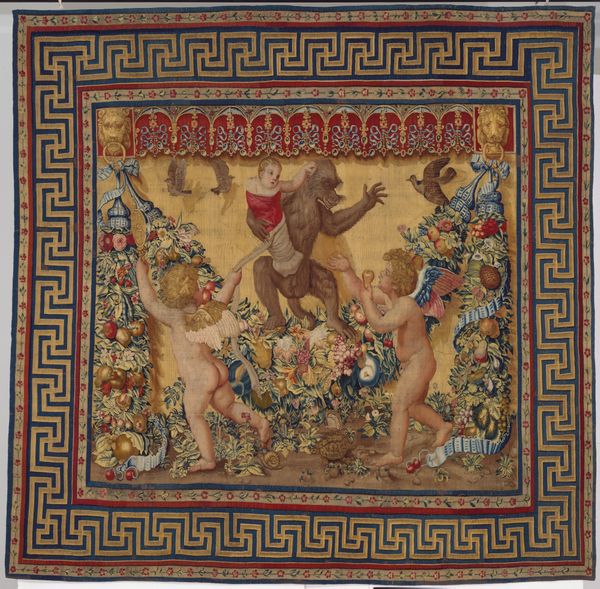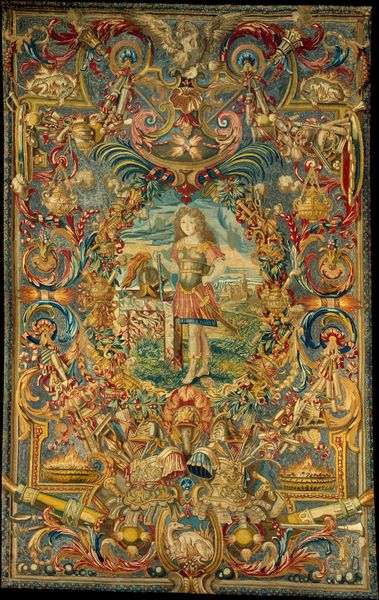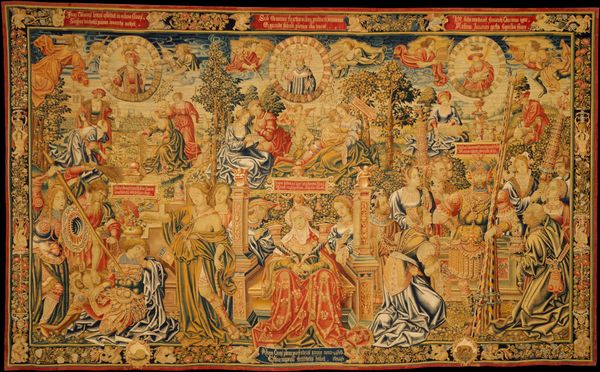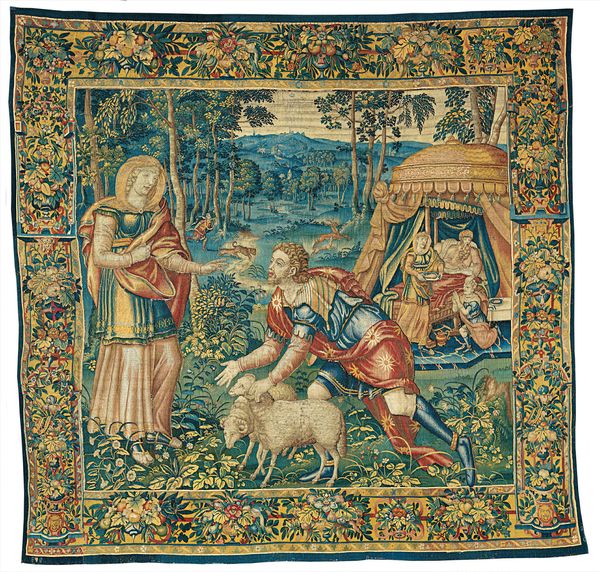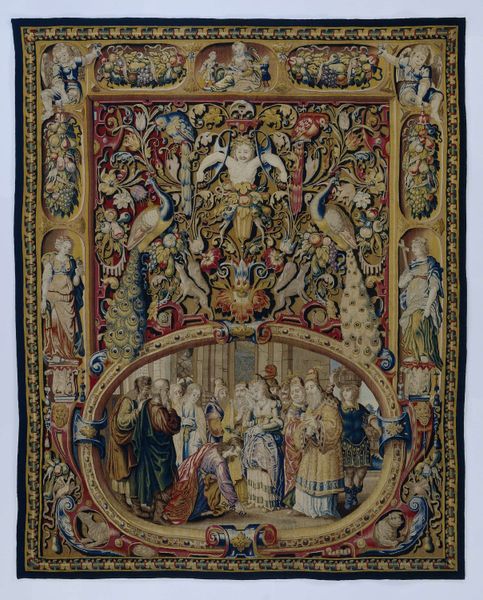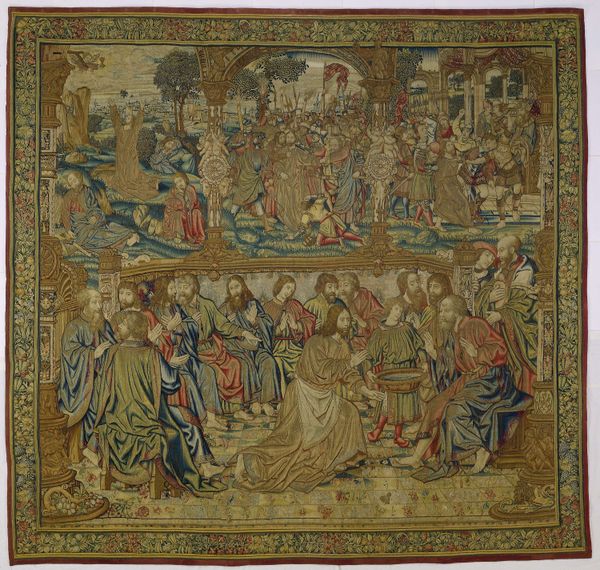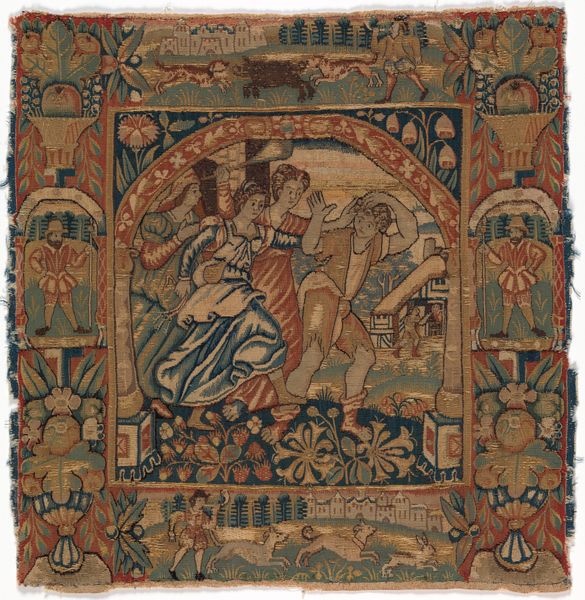
fibre-art, weaving, textile
#
fibre-art
#
allegory
#
weaving
#
landscape
#
textile
#
history-painting
#
northern-renaissance
#
decorative-art
Dimensions: 15 ft. 8 in. × 13 ft. 11 in. (477.5 × 424.2 cm)
Copyright: Public Domain
Editor: This tapestry, titled "August from a set of Medallion Months," was created between 1520 and 1533 by Bernard van Orley. The fact that it is woven gives it a softer quality than paintings of the same era. How do you interpret the tapestry’s blending of classical allegory with everyday scenes of agricultural life? Curator: Well, from a socio-historical viewpoint, this piece highlights the evolving role of art patronage during the Northern Renaissance. Tapestries like this served not only as decoration but also as statements of power and cultural capital. Consider how this 'Medallion Months' series, with its allegorical figures and detailed landscapes, reflects the patron's, possibly a wealthy merchant or noble, desire to associate themselves with classical virtues and the bounty of the land. The weaving medium itself—a highly valued craft—emphasizes its status as a luxury object. Does that suggest anything to you? Editor: It does! I’m thinking, what message was the patron trying to convey by connecting themselves with the land in that specific time? Curator: Precisely! The tapestry depicts a harmonious vision of society where different social classes fulfill their roles within a divinely ordained order, all under the symbolic authority of the patron represented through the ruling month. Also, consider its display context: hanging in a great hall, it would visually reinforce the patron's dominion to visitors. Notice too, how classical allusions such as Ceres and Segessa, are blended with contemporary labor in a seasonal rendering of Northern Europe. Editor: It is really interesting to consider tapestries like these as reflections of the patron's and societal aspirations rather than just a beautiful image. Curator: Exactly. By situating it within the network of power relations and artistic production, it opens a much more politically and culturally relevant dialogue than might be first seen.
Comments
No comments
Be the first to comment and join the conversation on the ultimate creative platform.
